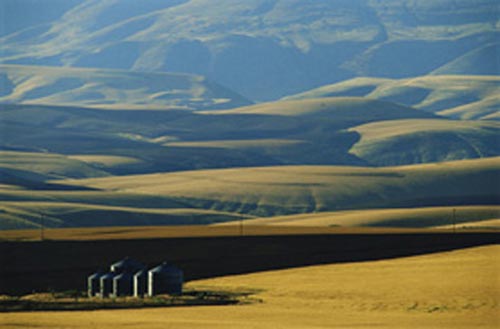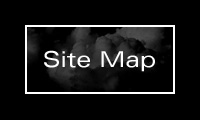
Satellite Site Operations for the California Regional PM10/PM2.5 Air Quality Study (CRPAQS)
The California Regional PM10/PM2.5 Air Quality Study (CRPAQS) was implemented to improve scientific understanding of excessive particulate matter (PM) levels in central California. Specifically, this understanding is needed to determine where and when populations experience excessive exposures, as defined by National Ambient Air Quality Standards (NAAQS) and State Air Quality Standards, and how to cost-effectively reduce those exposures to acceptable levels. The project was sponsored by the San Joaquin Valleywide Air Pollution Study Agency (JPA), and administered by the California Air Resources Board (ARB).
Technical and Business Systems (T&B Systems) and their teaming partners, Parsons ES (PES) and Air Resources Specialists (ARS), were contracted to establish and operate a network of monitoring sites for the Satellite Network element of the CRPAQS that produces a comprehensive database of a known quality. This element of field program consisted of the following measurements:
·
Particle mass (PM) loading
· Light scattering by aerosols (bsp)
·
Hydrocarbon (HC) sampling, and
· Upper-air meteorology (Rawinsonde)
The Satellite Network field data acquisition portion of the CRPAQS Program took place over a 14-month period from December 1999 to February 2001. The Project consisted of the three major elements: An Annual program which encompassed the entire period, a Fall Saturation study, and a Winter study (2000-2001) which consisted of periods during which intensive measurements were made. As part of the Annual Network, a number of sites were added in transport corridors to the Mojave Desert during the summer months when those areas historically experience peak PM loading.
The objective of the Annual Program element was to operate a field measurement network of sufficient scope so that the spatial and temporal characteristics of particulate loading and visibility variation in the project area could be more completely understood. The project domain included the entire San Joaquin Valley, the southern portion of the Sacramento Valley, the Bay/Delta area, the Sierra Nevada foothills, and the desert area south and east of southern San Joaquin Valley. PM10 and PM2.5 mass were measured on an every sixth day schedule at as many as 44 sites in the project area for the 14?month period that translated to a total of 72 sampling days. Summa canisters, integrated over 24-hours and exposed on the same schedule as PM, were analyzed for ambient levels of hydrocarbons at three sites. Nephelometers measuring light scatter were operated continuously at as many as 30 locations distributed throughout the project domain.
The Fall Saturation Program was a special monitoring campaign that was designed to provide a comprehensive database to determine the relative contributions to PM10 from agricultural activities in a dense network of receptors (26) in order to evaluate potential control strategies. In addition, the results of this study will be used in combination with the Annual Network results to evaluate integrated control strategies for both spatial scales. The area chosen for the project was in and around the town of Corcoran, in the southern San Joaquin Valley. The study area is affected by intensive cotton harvesting and processing activity during the early fall months, thus providing an excellent study opportunity. Nephelometers were operated continuously at 24 sites, and PM10 filter sampling was conducted daily at 11 sites.
The Winter program took place from December 1, 2000 to February 6, 2001. The objective of the Winter program was to provide intensified measurements of PM2.5 and bsp during periods of high PM loading in the Annual study region, emphasizing the areas around the Anchor sites in the San Joaquin Valley and Bay/Delta area. For this campaign, 16 additional nephelometer sites were added to the Annual network. Filter sampling was run on consecutive days at 25 selected Annual network sites on 15 high particulate episode days. HC sampling was similarly conducted daily at one site. In addition, T&B Systems made balloon-borne soundings of temperature, humidity and winds aloft at Fresno and Bakersfield during episodes. All additional Winter study monitoring and sampling was coordinated with the ongoing Annual program data acquisition operations.
Particulate
mass was measured using Airmetrics MiniVol filter samplers. A variety of filter
configurations, specific to each site location, were exposed for 24-hours providing
daily integrated measurements. The Desert Research Institute (DRI) in Reno, NV
prepared and analyzed the filter samples for particle mass loading and chemical
speciation. Nephelometers, manufactured by Radiance Research, were utilized to
continuously monitor the light scattering extinction coefficient (bsp). T&B
Systems and PES field technicians routinely downloaded nephelometer data and changed
filter samples at the Satellite sites on a regularly scheduled basis during the
14-month field-monitoring program. Hydrocarbon (HC) samplers were provided by
the Oregon Graduate Institute (OGI) who also prepared and conducted laboratory
analyses of the exposed canister. HC sampling was conducted on the same schedule
as the PM2.5 filter sampling.
T&B Systems also actively participated in
the program planning process, instrument selection and instrument acceptance testing.
A Quality Assurance Program, consisting of internal Standard Operating Procedures
(SOP), equipment calibrations and both independent and external audits, was developed
and implemented.
